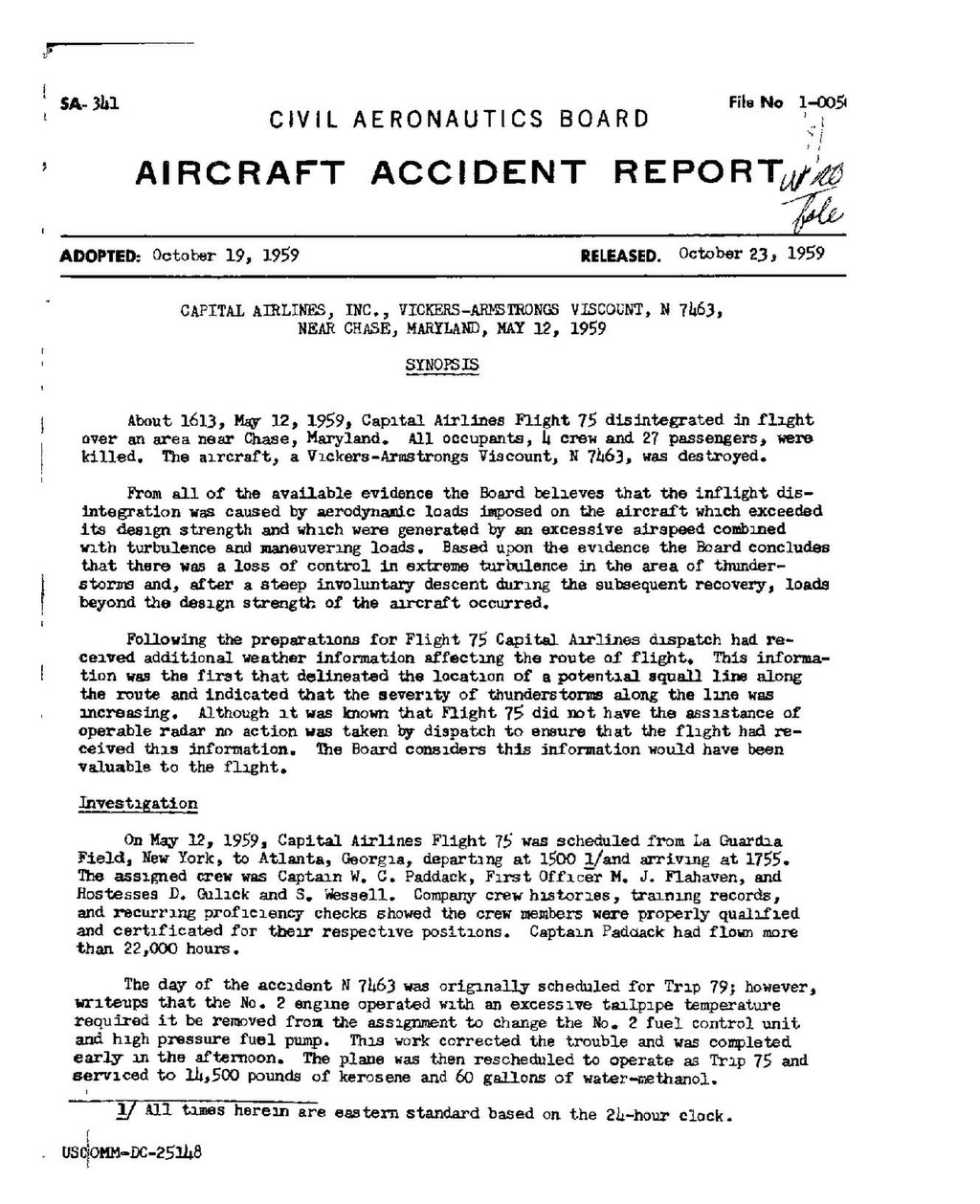CIVIL AERONAUTICS BOARD
AIRCRAFT ACCIDENT REPORT
CAPITAL AIRLINES, INC., VICKERS-ARMSTRONGS VISCOUNT, N 7463,
NEAR CHASE, MARYLAND, MAY 12, 1959
APRIL 23, 1965
SYNOPSIS
About 1613, May 12, 1959, Capital Airlines Flight 75 disintegrated in flight over an area near Chase, Maryland. All occupants, 4 crew and 27 passengers, were killed. The aircraft, a Vickers-Armstrongs Viscount, N 7463, was destroyed.
From all of the available evidence the Board believes that the inflight disintegration was caused by aerodynamic loads imposed on the aircraft which exceeded its design strength and which were generated by an excessive airspeed combined with turbulence and maneuvering loads. Based upon the evidence the Board concludes that there was a loss of control in extreme turbulence in the area of thunderstorms and, after a steep involuntary descent during the subsequent recovery, loads beyond the design strength of the aircraft occurred.
Following the preparations for Flight 75 Capital Airlines dispatch had received additional weather information affecting the route of flight. This information was the first that delineated the location of a potential squall line along the route and indicated that the severity of thunderstorms along the line was increasing. Although it was known that Flight 75 did not have the assistance of operable radar no action was taken by dispatch to ensure that the flight had received this information. The Board considers this information would have been valuable to the flight.
Investigation
On May 12, 1959, Capital Airlines Flight 85 was scheduled from La Guardia Field, New York, to Atlanta, Georgia, departing at 1500[1] and arriving at 1755. The assigned crew was Captain W. C. Paddack, First Officer M. J. Flahaven, and Hostesses D. Gulick and S. Wessell. Company crew histories, training records, ans recurring proficiency checks showed the crew members were properly qualified and certificated for their respective positions. Captain Paddack had flown more than 22,000 hours.
The day of the accident N 7463 was originally scheduled for Trip 79; however, writeups that the No. 2 engine operated with an excessive tailpipe temperature required it be removed from the assignment to change the No. 2 fuel control unit and high pressure fuel pump. This work corrected the trouble and was completed early in the afternoon. The plane was then rescheduled to operate as Trip 75 and serviced to 14,500 pounds of kerosene and 60 gallons of water-cethanol.USCOMM-DC-25148
- ↑ All times herein are eastern standard based on the 24-hour clock.
